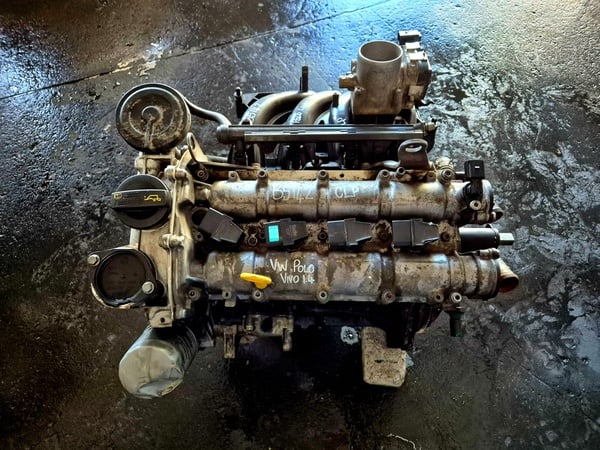Ensure consistent power with a high-performance clp engine.
Ensure consistent power with a high-performance clp engine.
Blog Article
How a Clp Engine Can Boost Efficiency in Numerous Industries
The development of CLP engines marks a considerable shift in functional performance across numerous industries, driven by their ability to maximize fuel usage and minimize downtime. Industries such as production and logistics stand to gain significantly from their durable design and regular power output, which assure to simplify operations and improve performance. As organizations increasingly prioritize sustainability along with effectiveness, the role of CLP engines comes to be even a lot more essential. What stays to be seen is just how these advancements will form the future landscape of industrial operations and their influence on broader economic patterns (clp engine).
Overview of CLP Engines
CLP engines, or Continuous Fluid Propellant engines, stand for a considerable improvement in propulsion modern technology, especially for area applications. These engines utilize a continual feed system that permits the sustained expulsion of propellant, leading to boosted effectiveness and performance compared to traditional solid or hybrid propulsion systems. By maintaining a consistent circulation of liquid propellant, CLP engines can attain a lot more precise drive control, which is vital for navigating spacecraft in numerous objective circumstances.
The design of CLP engines integrates advanced materials and innovative fuel management systems. clp engine. This results in decreased weight and increased integrity, vital variables for long-duration space objectives. The continuous procedure minimizes the danger of burning instability, a typical obstacle in conventional rocket engines.

Benefits in Manufacturing
The manufacturing of Continuous Fluid Propellant (CLP) engines offers numerous remarkable benefits that improve both effectiveness and cost-effectiveness. One of the primary advantages is the structured production process, which reduces the complexity related to typical propulsion systems. By using liquid propellant, manufacturers can attain better precision in engine performance, bring about enhanced power result and minimized waste.
Furthermore, CLP engines facilitate a greater degree of modularity, permitting less complicated assimilation into different manufacturing lines. This flexibility can substantially lower preparations and improve overall functional flexibility. The usage of CLP innovation also tends to lessen the need for extensive upkeep due to less moving components, which translates right into minimized downtime and operational prices.

Applications in Logistics
Leveraging Continuous Fluid Propellant (CLP) engines in logistics offers substantial benefits in operational performance and integrity. These engines give a durable option for various transport demands, making it possible for the smooth activity of products throughout substantial ranges. The integral design of CLP engines permits regular power output, which translates into smoother and extra predictable transport schedules.
One of the crucial applications of CLP engines in logistics remains in durable products transportation, where they can drive both ground and airborne vehicles. Their capacity to preserve high performance under differing load problems ensures that distribution timelines are fulfilled, therefore enhancing customer contentment. Furthermore, CLP engines can be incorporated into automated logistics systems, assisting in real-time monitoring and maximizing path preparation.
Additionally, the sturdiness of CLP engines decreases maintenance downtime, allowing logistics firms to optimize their functional capabilities. This is especially advantageous in warehousing procedures, where performance in handling and delivering items is essential. As logistics continues to evolve, the combination of CLP engines stands for a forward-thinking technique that not just enhances performance but additionally sustains the market's growing needs for reliability and speed.
Influence On Power Effectiveness
Just How do Continual Fluid Propellant (CLP) engines improve power effectiveness in transportation? CLP engines use a constant flow of fluid fuel, optimizing click this link burning processes and keeping a steady thrust result. This design lessens energy losses connected with standard combustion engines, where gas shipment can vary and lead to inefficiencies.
The continual operation of CLP engines permits a much more effective thermal cycle, leading to greater details Discover More Here impulse contrasted to standard engines. clp engine. This converts to minimized gas consumption for the exact same amount of work done, dramatically lowering operational prices throughout numerous transport industries, including aviation and maritime industries
Furthermore, the ability of CLP engines to keep ideal performance under varying tons conditions minimizes the requirement for regular acceleration and slowdown, further improving fuel performance. Enhanced power effectiveness not just contributes to cost financial savings however also brings about reduce greenhouse gas discharges, lining up with global sustainability goals.
Future Trends and Innovations
Emerging advancements in Continual Liquid Propellant (CLP) engine innovation promise to transform the landscape of transport efficiency and sustainability. As sectors pivot towards greener alternatives, CLP engines stand at the center, incorporating ingenious products and style techniques that boost efficiency while minimizing environmental impact.
One of one of the most encouraging trends is the adoption of crossbreed systems that incorporate CLP engines with eco-friendly energy sources. This harmony can enhance gas usage and reduce exhausts, aligning with worldwide sustainability goals. Additionally, advancements in computational liquid characteristics (CFD) are promoting the style of even more aerodynamically effective engines, leading to reduced drag and boosted fuel efficiency.
Furthermore, the growth of clever tracking systems is established to improve functional performances. These systems utilize data analytics and IoT technology to optimize engine efficiency in real-time, guaranteeing that the engines run within their most reliable specifications.
As research continues to check out alternate propellant formulations-- such as biofuels and artificial fuels-- the future of CLP engines looks appealing. By harnessing these developments, markets can not just improve their performance but additionally add significantly to a cleaner, extra sustainable future in transportation.
Verdict
In conclusion, CLP engines represent a significant innovation in performance across multiple markets. The integration of sophisticated here are the findings materials and less moving components lessens maintenance needs, while alignment with sustainability objectives placements CLP engines as a crucial innovation for the future.
Report this page